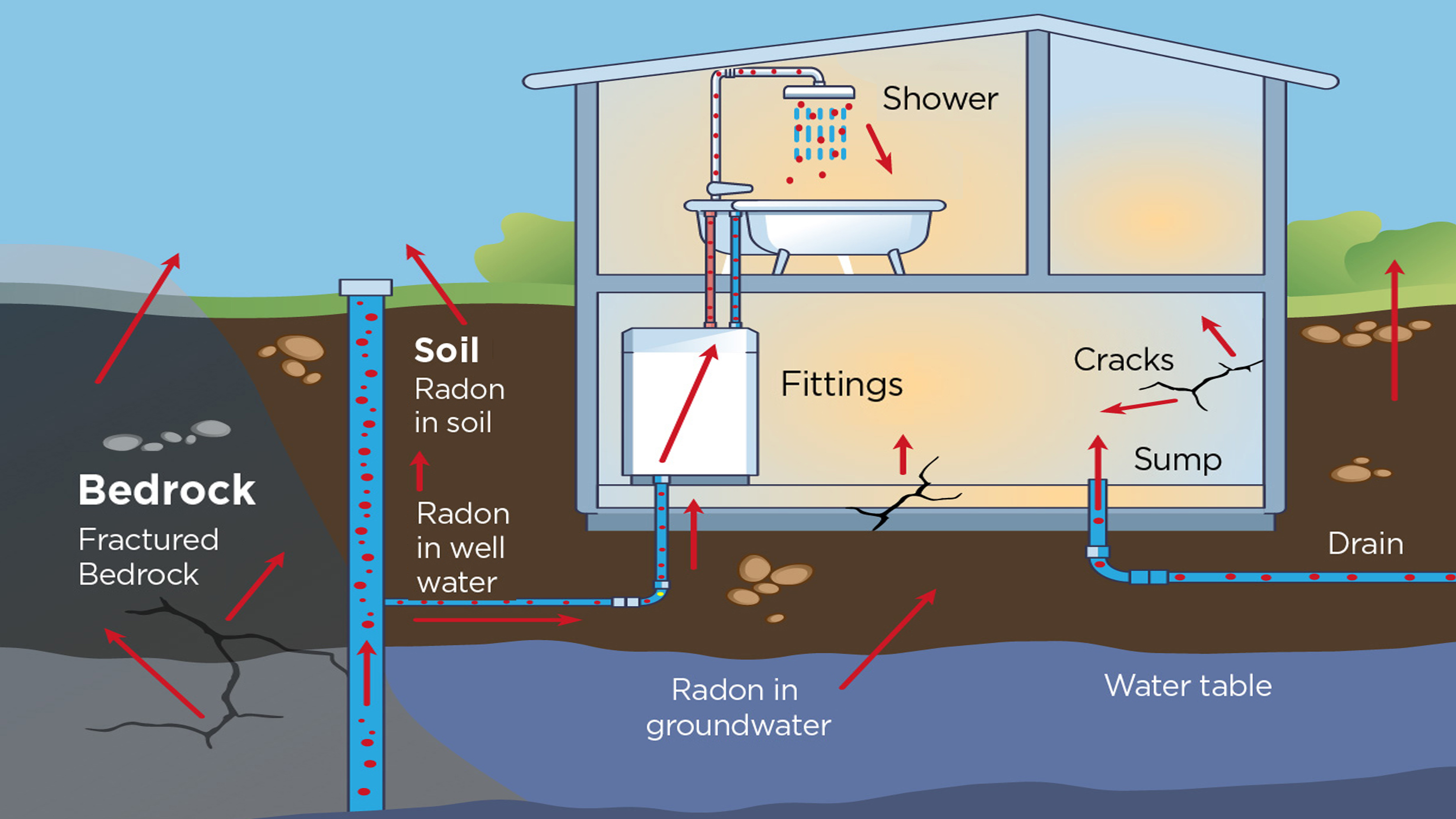How Radon Gas Enters Your Home
This diagram illustrates radon movements inside and outside a building.
Radon
Radon is a naturally occurring radioactive gas formed by the radioactive decay of uranium in the natural environment. It is invisible and odourless, but radon measurement devices can easily detect it. When radon is released from the ground into the outdoor air, it is diluted and not a concern. In enclosed spaces, like homes, radon gas can accumulate to high levels and become a health risk.
The International Agency for Research on Cancer (IARC) has identified radon as a group 1 carcinogen. It is the number one cause of lung cancer for non-smokers in Canada. An individual's risk of lung cancer from radon depends on the concentration and duration of an individual's exposure. As such, individuals with long-term exposure to high radon levels are at greater risk of developing lung cancer.
Soil gas is the largest source of indoor radon. Radon can enter a home anywhere the building is in contact with the ground. Typical entry points include cracks in foundation walls and floor slabs, construction joints, gaps around service pipes, support posts, floor drains, or sumps (Figure above). Radon will also move through the foundation. While higher radon levels are typical in basements and crawl spaces, elevated radon levels can be found throughout a home. Radon out gassing from water may be a potential source when a home's water supply is from a private well. Typically radon from water does not affect indoor radon levels as much as soil gas.
Radon gas is in all buildings in contact with the ground. Testing is the only way to know the radon level in a specific home and to determine if mitigation is necessary. Health Canada recommends every home should be tested, no matter where it is located, the type of building, or if it already has a mitigation system. Radon can vary widely between homes, even in homes in the same building, or buildings on the same street.


